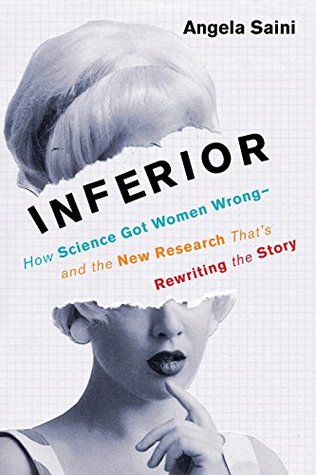More on this book
Community
Kindle Notes & Highlights
by
Angela Saini
So here, in all the statistics on housework, pregnancy, child care, gender bias, and harassment, we have some explanations for why so few women are at the top in science and engineering. Rather than falling into Lawrence Summers’s tantalizing trap of assuming the world looks this way because it’s the natural order of things, take a step back. Imbalance in the sciences is at least partly because women face a web of pressures throughout their lives, which men often don’t face.
In the history of science, we have to hunt for the women—not because they weren’t capable of doing research but because for such a large chunk of time they didn’t have the chance. We’re still living with the legacy of an establishment that’s just beginning to recover from centuries of entrenched exclusion and prejudice.
If studies seem sexist, occasionally it’s because they are. But then, it’s impossible not to expect that the very bias that kept women out of science for centuries might have affected the very blood and bones of their work—that it might have prejudiced science’s objectivity. But there’s more to this story. Having more women in science is already changing how science is done. Questions are being asked that were never asked before. Assumptions are being challenged. Old ideas are giving way to new ones. The distorted, often negative picture that research has painted of women in the past has been
...more
anthropologist Kristen Hawkes at the University of Utah put it to me when I interviewed her about her work on menopause for the final chapter of this book, “If you’re really paying attention to biology, how can you not be a feminist? If you’re a serious feminist and want to understand what the underpinnings of these things are, and where they come from, then biology—more science, not less science.”
In 2005 University of Wisconsin, Madison, psychologist Janet Shibley Hyde proposed a “gender similarities hypothesis” to demonstrate just how big this overlap is. In a table more than three pages long, she lists the statistical gaps that have been found between the sexes on all kinds of measures, from vocabulary and anxiety about mathematics to aggression and self-esteem. In every case, except for throwing distance and vertical jumping, females are less than one standard deviation apart from males. On many measures, they are less than a tenth of a standard deviation apart, which is
...more
The cloudy window of the past has so distorted how we see society that we find it hard to imagine it another way. This is why science matters for every one of us. The job ahead for researchers is to keep cleaning the window until we see ourselves as we truly are,


